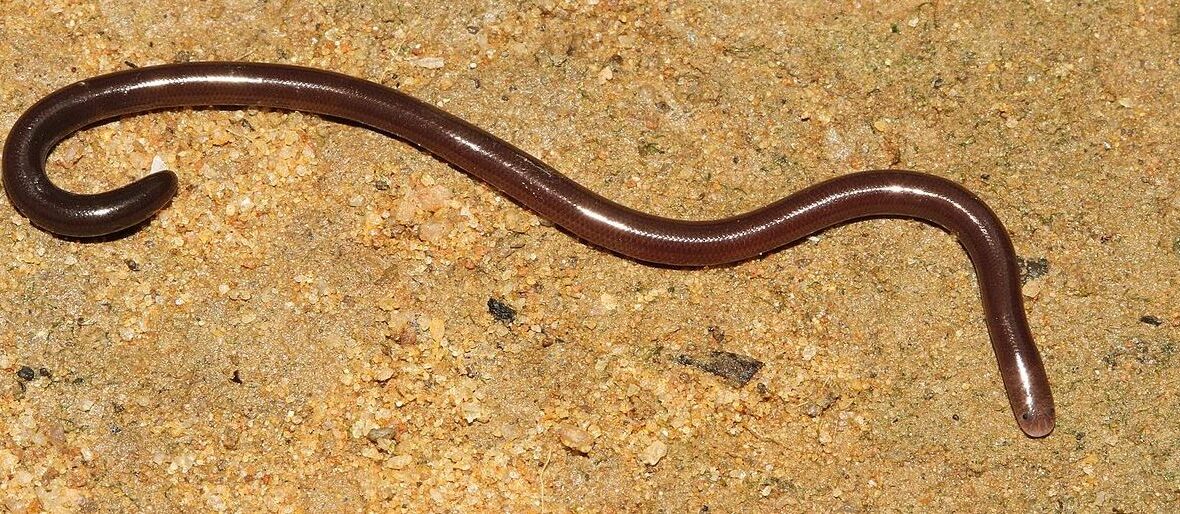
The brahminy blind snake, aka flowerpot snake, common blind snake, Hawaiian blind snake, or island blind snake, is widely distributed to nearly every continent. They can be found in the United States, Mexico, Central America, South America, Africa, Asia, and Australia. There are currently no real natural threats to these snakes, sans the possibility for habitat loss, accidental poisoning, and climate change (that can cause droughts and flooding), so they are listed as Least Concern by the IUCN. Their populations are also increasing.
First the Stats…
Scientific name: Indotyphlops braminus
Weight: Up to .17 ounce
Length: Up to 6.5 inches
Lifespan: Up to 20 years
Now on to the Facts!
1.) Brahminy blind snakes are nonvenomous serpents.
2.) These snakes are totally fossorial (spend their lives underground).
3.) They are among the few snakes that are considered social, as they typically take up residence in ant and termite mounds in knots (groups).
4.) A group of snakes is called a bed, den, knot, nest, or pit.
5.) Even thought they are predominantly nocturnal (active at night), they can also be diurnal (active during the day) as well.
But wait, there’s more on the brahminy blind snake!
6.) When these snakes are handled, they won’t bite, but rather they will squirm erratically, musk (release a stinky substance – like feces “poop”), and poke their handler with their tail spine.
7.) They prey on ant and termite eggs, larvae, and pupae.
Did you know…?
This species of snake are parthenogenetic (reproduce without the aid of a male) and all specimens acquired have been female.
8.) As mentioned, all of these snakes are female. They also produce up to 8 young. Some blind snakes produce eggs while others produce live young.
9.) The snakelets are born or hatched precocial (self sufficient).
10.) They have eyes, but they are covered by ocular scales. So, while they cannot form images, they are still very photosensitive (react quite negatively to light).
11.) There are approximately 240 different species of blind snakes.
Now a Short Brahminy Blind Snake Video!
This video talks about blind snakes in general.
Be sure to share & comment below! Also, check out the Critter Science YouTube channel. Videos added regularly!
Want to suggest a critter for me to write about? Let me know here.
Some source material acquired from: Wikipedia & IUCN
Photo credit: David V. Raju



